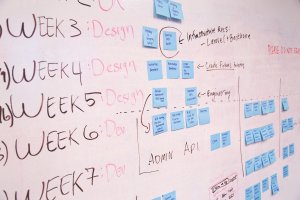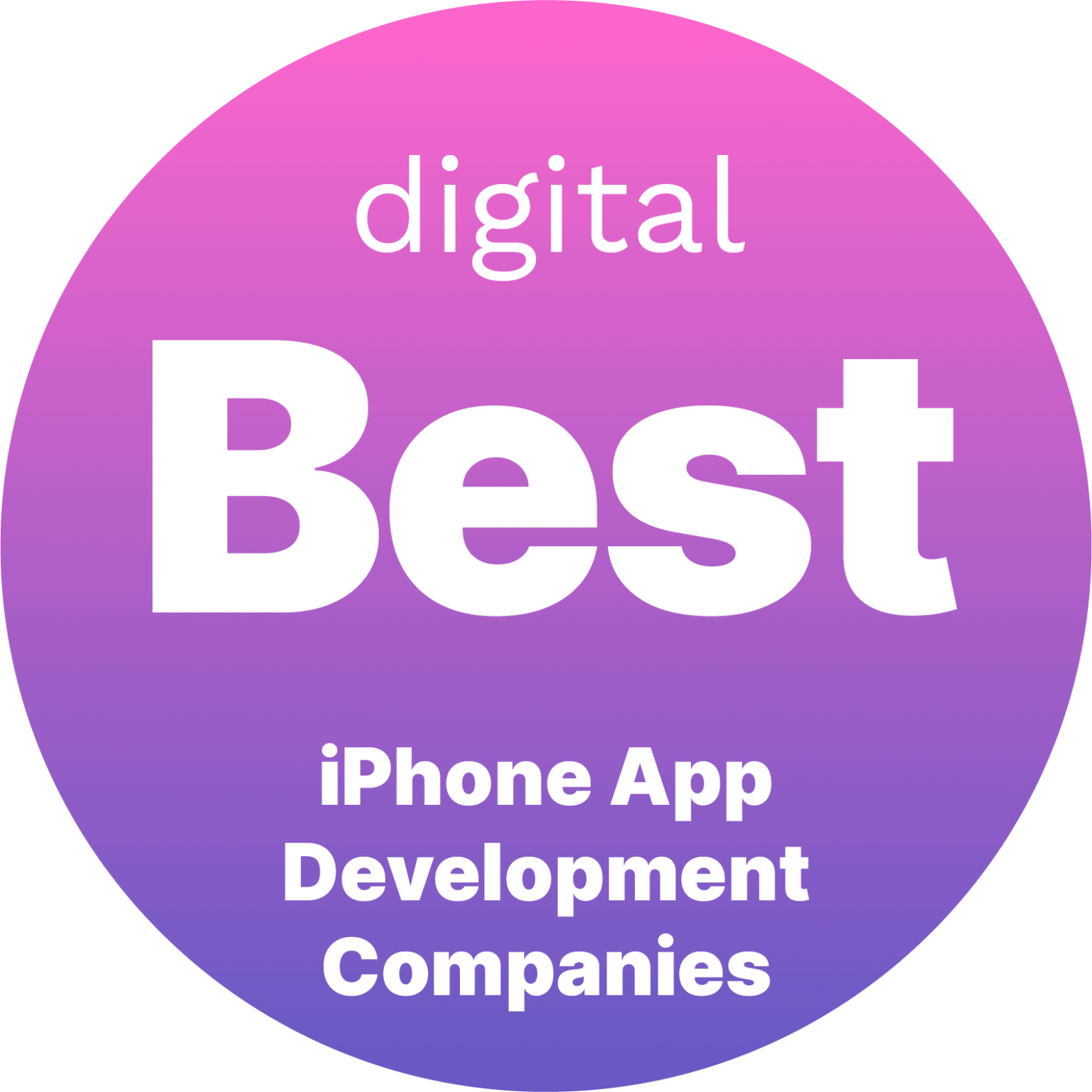Key Takeaways:
- Upfront Discovery Prevents Costly Mistakes: Investing time in an early discovery phase clarifies your app’s goals and requirements, greatly reducing costly mid-project changes and overruns. Skipping this step often leads to confusion, rework, and budget blowouts.
- Aligns Stakeholders & Sharpens Scope: A structured discovery phase aligns all stakeholders on a shared vision and defined scope. This ensures everyone – from executives to developers – agrees on what will be built and why, preventing miscommunication and scope creep later.
- Speeds Up Time to Market: Although it adds upfront time, discovery ultimately accelerates delivery. By validating ideas and pinpointing pitfalls early, you avoid delays during development and can launch faster with a product that’s right the first time.

What Is the Discovery Phase in App Development?
In app development, the discovery phase (also called product discovery or project discovery) is a focused preparatory stage before any heavy coding begins. Think of it as laying the blueprint for your app. During discovery, your team (often alongside an experienced mobile app development partner) works to deeply understand the project’s objectives, users, and technical requirements. This phase typically involves:
- Defining Goals & Success Metrics: What business problem or customer need will the app solve? How will success be measured? The team clarifies the app’s vision and aligns it with business strategy from the start.
- User and Market Research: Who will use the app? What are their pain points and needs? Through interviews, surveys, and market analysis, you validate that your concept addresses a real demand. (For example, Dogtown Media’s process emphasizes early user research – “you can’t devise a solution if you don’t understand the problem” – to ensure the app will truly resonate with its audience.)
- Scope Definition & Requirements Gathering: Based on the vision and research, you outline the app’s features and functionality in detail. This includes documenting functional requirements (the features your app must have) and non-functional requirements (performance, security, scalability needs, etc.). The team may create user stories or a preliminary feature list, distinguishing “must-haves” vs. “nice-to-haves” so that the project scope is realistic. Clear documentation at this stage prevents ambiguity later on.
- UI/UX Planning and Prototyping: Early design work is often part of discovery. Wireframes or mockups of key screens are drafted to visualize the user flow and interface. Engaging in some initial UI/UX design during discovery helps ensure the app’s usability is considered from day one. In many cases, teams build a prototype or proof-of-concept to test assumptions. This could be a clickable app prototype or a simplified model of a critical feature. It’s far cheaper and easier to adjust an idea at the prototype stage than after full development.
- Technical Feasibility Assessment: The discovery team (including architects or senior engineers) identifies any technical challenges upfront. They evaluate different tech stacks and integrations, and confirm whether the envisioned features can be implemented within the budget, timeline, and technical constraints. For instance, they might explore third-party APIs, consider backend infrastructure needs, or verify hardware requirements if it’s an IoT app development project. By the end, you should have a high-level architecture plan and know if any roadblocks lurk ahead.
- Project Plan & Estimates: A key outcome of discovery is a project roadmap. This includes an estimated timeline, milestones, and resource plans for design and development phases. Because the requirements are clearer, any schedule and cost estimates made after discovery are far more accurate than those made blindly at the start. Stakeholders get a realistic picture of what it will take to build the app.
All the findings from these activities are typically compiled into concrete deliverables – for example, a Product Requirement Document (PRD), user personas, workflow diagrams, low-fidelity or high-fidelity wireframes, an architectural overview, and a project plan. These artifacts serve as the foundation for the design and development stages to follow. In short, the discovery phase turns ideas and assumptions into a validated, actionable plan for development.
Why Skipping the Discovery Phase Is Risky
Skipping or rushing through the discovery phase is a bit like setting off on a road trip without a map – you might reach your destination, but you’re likely to get lost, waste time, and spend a lot more money on fuel. In the context of app projects, foregoing proper discovery introduces several business and product risks:
- Unclear Requirements & Scope Creep: Without thorough early planning, projects often start with fuzzy requirements. Teams dive into coding with an evolving or poorly defined scope, which almost guarantees problems. It’s no surprise that 33% of IT project cost overruns stem from midstream changes in requirements. When features haven’t been fully thought through, they get added or altered later (“We need to add this too!”), causing scope creep. This leads to more development rework, extended timelines, and budget inflation. A discovery phase forces you to nail down a clear, agreed-upon scope upfront, mitigating this risk.
- Misalignment Among Stakeholders: Skipping discovery often means skipping important conversations. Key stakeholders – executives, product owners, developers, end-users – may have differing expectations that don’t surface until conflict arises in mid-development. According to a 2021 Project Management Institute survey, 30% of project failures in Europe were attributed to poorly defined goals and misaligned stakeholder expectations. This kind of misalignment can be fatal to an app project. The discovery process brings all parties to the table early. By collaboratively defining the project’s “north star” and priorities, everyone moves forward with a shared vision. Missing this step, on the other hand, leaves you vulnerable to internal disputes or last-minute directional changes that derail the project.
- Higher Chances of Cost Overruns & Delays: Numerous studies have linked inadequate upfront planning to budget and schedule disasters. A famous analysis by McKinsey found that large IT projects run 45% over their budget and 7% over time, while delivering 56% less value than promised on average. The report squarely blames poor initial “diagnostics” (i.e., insufficient planning and discovery) for these failures. In practical terms, when teams don’t flesh out requirements or identify pitfalls early, the project is almost certain to face hiccups that inflate costs and timelines. Surprises pop up mid-development (“We didn’t consider that compliance requirement!” or “Users actually needed a different workflow…”) which means going back to the drawing board. One survey found that about 31% of respondents believe poor project planning and unrealistic timelines are a prime cause of project delays. It’s the classic case of “fail to plan, plan to fail.” Skipping discovery might seem to save time or money in the beginning, but it often leads to costly overruns and missed deadlines in the long run.
- Building the Wrong Product (Poor Product-Market Fit): Perhaps the biggest risk of all is ending up with an app that doesn’t hit the mark. If you don’t validate the concept with real users or research the market during discovery, you risk building something that customers don’t actually want or need. Industry data shows that an alarming proportion of features in software products go unused by users – around 45% of software features are never used at all. Why build and pay for features that no one uses? These scenarios often trace back to inadequate discovery: skipping user research, skipping competitor analysis, or not prototyping to gather feedback. Without these insights, you may invest months in developing an app only to learn too late that it’s solving the wrong problem or has a poor user experience. A discovery phase forces you to challenge assumptions early (through user interviews, market scans, prototype testing, etc.), greatly reducing the risk of a costly flop after launch.
- Technical Obstacles and Rework: In complex projects, especially involving emerging tech or integrations (think IoT or AI), there may be hidden technical challenges that only surface with deeper investigation. If you charge straight into development, such unknowns can ambush the team mid-project – for example, an API that doesn’t scale, a hardware component that doesn’t behave as expected, or a security requirement that was overlooked. Resolving these after you’ve already built large portions of the app is far more difficult and expensive. A proper discovery phase includes technical due diligence to uncover these issues. For instance, in one IoT wearable project, a discovery/PoC phase revealed that the device’s metal casing was blocking Bluetooth signals – a critical insight that allowed engineers to tweak the hardware design early. If discovered late, after manufacturing devices, this issue could have derailed the timeline and budget entirely. Skipping discovery means flying blind to such risks.
In summary, bypassing the discovery phase is a gamble with very high stakes. The harsh truth is that lack of early planning can turn even a great app idea into a “sinking ship” of a project, plagued by constant budget overruns and blown deadlines. On the other hand, spending the effort to do discovery mitigates these risks by ensuring you start development on solid ground with eyes wide open.
Core Benefits of a Discovery Phase
Engaging in a discovery phase is not just about avoiding pitfalls; it actively creates positive outcomes that set your app project up for success. By front-loading critical thinking and planning, discovery unlocks benefits that echo through the entire project lifecycle. Here are the core advantages:
1. Crystal-Clear Scope and Vision
One of the most important outcomes of discovery is scope clarity – everyone knows exactly what will (and won’t) be built, and why. This clarity comes from turning nebulous ideas into well-defined requirements and a shared product vision. All stakeholders agree on the app’s key features, target users, and use cases before a single line of code is written.
 Having a clearly defined scope prevents the dreaded scope creep that can sink projects. It’s worth noting that projects with well-defined requirements have significantly higher success rates. In fact, PMI research found that 47% of unsuccessful projects cite poor requirements management as a major cause of failure. By contrast, teams that invest time in upfront requirements gathering (as done in discovery) drastically reduce confusion later. One study even observed that projects using a defined requirements process experienced a 71% improvement in project success rates.
Having a clearly defined scope prevents the dreaded scope creep that can sink projects. It’s worth noting that projects with well-defined requirements have significantly higher success rates. In fact, PMI research found that 47% of unsuccessful projects cite poor requirements management as a major cause of failure. By contrast, teams that invest time in upfront requirements gathering (as done in discovery) drastically reduce confusion later. One study even observed that projects using a defined requirements process experienced a 71% improvement in project success rates.
During discovery, writing down detailed specifications, user stories, and acceptance criteria establishes a single source of truth. It forces conversations to happen early about what the app must do, what it shouldn’t do, and what success looks like. Teams also often produce prototypes or wireframes in discovery, which serve as a visual agreement on the product’s direction. All this means that when development starts, there’s far less room for misinterpretation. Developers can work on a roadmap that’s already vetted and agreed upon, rather than on shifting sands.
Bottom line: Clarity upfront saves enormous time later. By the end of discovery, you have a unified vision and a precise feature roadmap. New ideas or changes are not sneaking in mid-project to disrupt progress – they’ve been considered and either incorporated or consciously deferred. This disciplined approach keeps everyone focused and the project on track.
2. Stakeholder Alignment and Buy-In
An app project’s success isn’t just about technology; it’s about people. A huge benefit of the discovery phase is that it aligns all the key players – from your internal stakeholders (executives, product managers, marketing, IT, etc.) to external partners or clients – early in the process. Through discovery workshops and collaborative planning sessions, each stakeholder’s perspectives and concerns are brought into the open. This fosters a shared understanding and avoids surprises down the road.
By actively involving stakeholders in shaping the requirements and priorities, you also build buy-in. People are far more supportive of a plan that they helped create. For example, an executive sponsor might have certain business goals in mind, while end-users care about ease of use, and the engineering team might flag technical limitations. In a discovery meeting, all these perspectives get discussed and reconciled. The outcome is a set of aligned objectives and a clear rationale for the project plan that everyone can get behind. If disagreements or unrealistic expectations exist, it’s much better to iron them out in week 2 of the project than in week 20.
Stakeholder alignment has very tangible effects on project outcomes. Recall the earlier statistic that poorly defined goals and stakeholder misalignment contributed to 30% of project failures. The discovery phase directly addresses this by creating a forum for goal definition and expectation management. A well-run discovery phase will produce agreed-upon goals (e.g. “Increase customer retention by X% via the app within one year”) and document them. It also sets priorities that guide decision-making later (“Feature A is critical for launch, feature B can come in phase 2 if time permits”). Everyone knows what success looks like, which features are mission-critical, and which trade-offs are acceptable – before development starts.
Another alignment benefit is that discovery often highlights impacts on various departments early. For instance, if your app will require customer support or new operational processes, those teams find out now and can prepare. No one likes nasty surprises like a new app feature dropping on their lap without warning. Discovery ensures all parties are in sync.
In short, discovery phase gets all your ducks in a row. The team emerges unified, with each stakeholder understanding their role and confident that the project is headed in the right direction. This unity of purpose boosts morale and cooperation throughout the project, creating a smoother path to success.
3. Reduced Development Costs and Avoided Rework
It might seem counterintuitive that doing “extra” work upfront saves money, but time and again, this proves true in software projects. Discovery is an investment that pays for itself multiple times over by reducing costly mistakes and rework during development.
Consider the cost of catching a major issue or changing a requirement late in the game versus early on. Studies in software engineering consistently show that the later in the development lifecycle a problem is found, the more expensive it is to fix. For example, IBM data famously illustrated that a bug or requirement error caught during the requirements/design phase might cost $1 to fix, but fixing it during development or testing could cost 10x more, and if found after release, it could cost up to 100x more. The discovery phase helps you catch those “bugs” in your plan – whether they are flawed assumptions, missing pieces, or technical hurdles – before they balloon into budget-busting problems.
 By hashing out requirements and validating the concept early, you minimize mid-project pivots, which are very expensive. A change request during coding or, worse, after user testing, can mean partial redevelopment, additional design work, and repeated QA cycles. All of that adds direct cost and also opportunity cost (while you’re fixing missteps, you’re not moving on to new features or projects). It’s much cheaper to make a decision on a whiteboard in week 3 than to recode an entire module in week 10.
By hashing out requirements and validating the concept early, you minimize mid-project pivots, which are very expensive. A change request during coding or, worse, after user testing, can mean partial redevelopment, additional design work, and repeated QA cycles. All of that adds direct cost and also opportunity cost (while you’re fixing missteps, you’re not moving on to new features or projects). It’s much cheaper to make a decision on a whiteboard in week 3 than to recode an entire module in week 10.
Real-world data underscores the cost savings of doing it right the first time. One development agency, SolveIt, reported that performing a robust discovery phase for a client’s medical app reduced the overall development cost by 25%. That is a huge saving that went straight to the client’s bottom line – money that would have otherwise been spent on building and potentially rebuilding features without that early insight. Similarly, in our earlier IoT example, discovering the hardware communication issue early undoubtedly saved significant rework costs (imagine if they had to redesign and manufacture devices after full development – an extremely expensive mistake to fix). By identifying the optimal solution upfront (in that case, boosting the Bluetooth signal or altering the design), the team avoided a costly detour.
Additionally, a thorough discovery often leads to a leaner, more efficient build. By analyzing which features truly deliver value and which are superfluous, you can cut out waste. It’s not uncommon that during discovery a company realizes not to build a certain feature after all, because user research showed low interest, or to postpone some “nice-to-have” ideas. This prioritization means you spend development dollars only on what’s truly needed for the initial release. As an illustration, consider that Standish Group findings showed only 29% of software projects are completed successfully on time/on budget, and a big culprit is unnecessary features and scope. Discovery fights that by keeping the project lean and focused, which directly translates into lower development and maintenance costs.
In summary, the discovery phase saves money by eliminating ambiguity and error upfront. It’s much like constructing a building – changes to the blueprint are cheap; changes made after the structure is half-built are extremely costly. With a solid blueprint from discovery, your development team can execute without expensive guesswork, and you won’t be paying for the project twice.
4. Faster Time to Market (Yes, Faster!)
At first glance, spending a few weeks on discovery might appear to “delay” the project start. But in reality, this phase can significantly accelerate your time to market. By uncovering information and making decisions early, discovery prevents the stalls and backtracking that commonly slow down development.
Imagine two scenarios: Team A skips formal discovery and jumps straight into coding. Partway through, they realize they’re not sure about some feature details; meetings are held, features get reworked, maybe a pivot happens – all causing downtime. Team B, on the other hand, spent the first 3-4 weeks in discovery nailing down the spec. When they start building, they have a clear roadmap and encounter far fewer “stop and figure it out” moments. Which team delivers sooner? Likely Team B. The upfront time is recouped by avoiding chaos later.
A well-defined project from discovery allows for parallel progress as well. While designers finalize the UI flow and engineers set up the architecture (all informed by the discovery outputs), project managers can already be planning launch marketing, and QA can prepare test plans, etc., because everyone knows the target. Without discovery, a lot of these roles would be left waiting for clarity. In essence, discovery front-loads the thinking so that execution can be swift and smooth.
There’s also a direct link between avoiding rework and speeding up delivery. If you build something right the first time, you’re not spending additional cycles fixing it. It’s sobering that a significant percentage of project time often goes into revising or correcting work that wasn’t done right initially. By reducing that churn, projects finish faster. Research confirms this: a report by 8allocate noted that skipping discovery increases the risk of product-market misfit and technical issues, whereas having that phase “helps businesses avoid costly mistakes by clarifying requirements, validating ideas, and setting a clear development roadmap”. Clarity and validation upfront = fewer roadblocks during development = faster completion.
Another aspect is that discovery encourages focusing on a Minimum Viable Product (MVP) approach – identifying the core features needed to go to market, and deferring less crucial features to later updates. This means your initial launch can happen sooner, with a lean product, rather than waiting to develop every possible feature (some of which might not even be needed at launch). Many successful apps start as an MVP; through discovery, you’ll pinpoint what that MVP should include. By launching earlier with a solid core product, you begin learning from real users sooner and can iterate in subsequent phases, capturing market opportunity without a lengthy initial development cycle.
Finally, consider schedule risks: when plans are half-baked, timelines are essentially guesses. Those projects often blow past their deadlines because unknowns turn into fires to put out. With discovery, you create a realistic schedule based on a deeper understanding of the work. Teams can estimate tasks more accurately and buffer for known challenges, which improves the likelihood of hitting target dates. In a Boston Consulting Group survey, nearly half of executives said over 30% of their tech projects were late, citing unrealistic timelines and lack of business/tech alignment as key reasons. Discovery addresses exactly those issues – setting practical timelines and aligning tech solutions with business objectives – thereby increasing the chances your project launches on schedule.
In short, the discovery phase is a classic case of “slow down to speed up.” A bit of patience and planning at the outset prevents costly delays later. It sets you up to deliver a quality app faster, because the team isn’t losing time to missteps and course-corrections. When you’re first to market with the right solution, that’s a competitive edge that can make a big difference.
FAQ: Common Questions About the Discovery Phase
Q: How long does an app project discovery phase usually take?
A: It depends on the project’s complexity, but typically a discovery phase can range from a couple of weeks to a couple of months. A small app for a single platform might spend 2-4 weeks in discovery, whereas a large-scale enterprise app or an innovative IoT solution could take 6-8 weeks (or more) to thoroughly research and plan. Remember, this phase involves activities like stakeholder workshops, user research, prototyping, and technical analysis. While it might feel like adding time, this investment often saves time later by preventing false starts. Many development experts recommend dedicating roughly 5-10% of the total project timeline to discovery efforts – enough to cover the bases without stalling momentum.
Q: What deliverables or outcomes should we expect from the discovery phase?
A: By the end of discovery, you should have several tangible outcomes in hand. Common deliverables include:
- A Project Requirements Document or detailed feature list that clearly defines what the app will do.
- User personas and/or user journey maps identifying your target audience and how they will use the app.
- Wireframes or mockups of key screens (giving a first visual sense of the UI/UX).
- A high-level architecture outline (how the system will be structured, any third-party services, etc.) and possibly a technical feasibility report.
- A project plan with an estimated timeline, milestones, and resource estimates/budget for development.
Often, you’ll also get an interactive prototype or proof-of-concept if that was part of the scope. Essentially, you emerge from discovery with a blueprint for development: everyone should be able to look at the documentation and understand the plan for building the app. These deliverables are extremely useful for obtaining stakeholder approval or securing funding as well, because they demonstrate that the project is well thought-out.
Q: If we already have a clear idea and requirements, do we still need a discovery phase?
A: It’s great that you have a clear idea – that will definitely streamline the process – but a discovery phase can still add value in most cases. Even if your team believes the requirements are set, discovery serves as a validation and risk-check step. It will double-check that nothing critical has been overlooked and that everyone’s understanding of the idea is truly aligned.
Often, through the discovery workshops or technical review, teams uncover “unknown unknowns” – maybe an integration you hadn’t thought of, a user need that wasn’t obvious, or a potential challenge in scaling the app. It’s much better to surface those before coding begins. That said, the scope of discovery can be scaled to fit your situation. If you genuinely have a rock-solid, detailed specification and user research already in hand, the discovery phase might be shorter and more focused on technical planning or UX prototyping. The key is to be sure about what you know.
As one product management expert put it, product discovery reduces four major risks: value risk, usability risk, feasibility risk, and business viability risk. Unless you’ve comprehensively addressed all of those risks already, spending a bit of time in discovery is a smart insurance policy. Skipping it entirely is advisable only if you are absolutely confident (through prior evidence) that every requirement is understood and agreed upon – a scenario that is actually quite rare.
Q: Will doing a discovery phase delay our time to market?
A: It might seem like adding an extra phase will slow things down, but in practice discovery often makes the overall timeline faster. By uncovering requirements and issues early, you avoid the big delays that occur when projects hit unanticipated problems mid-stream. Think of discovery as taking a moment to set the correct course so that you don’t have to stop and backtrack later.
Many teams find that the weeks spent on discovery are recovered later because development goes more smoothly with fewer interruptions. Also, discovery helps in prioritizing an MVP – meaning you can launch sooner with a core set of features, then iterate. Rather than building a bunch of unvalidated features (which takes longer and might require rework), you focus on what’s most important.
So, while there is an upfront time investment, it pays off in a shorter, more predictable development cycle. In short, a project with discovery is more likely to hit its launch date than one without. As noted, poor planning is a top cause of delays – and discovery is proper planning.
Q: How much does a discovery phase cost, and is it worth it?
A: The cost of a discovery phase can vary widely based on its scope and who is conducting it. If you engage a professional agency or consulting team, discovery is often a small percentage of the total project budget. Some rough benchmarks: the discovery phase might cost anywhere from, say, $10,000 to $30,000 for a mid-sized app project (though very small projects could be less, and very large enterprise discoveries could be more).
That might correspond to roughly 10-15% of the overall development cost. While it is an upfront expense, it’s important to view it as an investment in doing the project right. Consider that the average cost of developing a full mobile app can be $50k, $100k, or more – a failed or poorly executed project would waste that entire amount. Compared to that, spending a fraction on discovery to ensure the project’s success is extremely worthwhile. In fact, skipping discovery can lead to budget blowouts far exceeding the initial savings.
As mentioned earlier, projects that proceed without proper groundwork often face budget overruns (McKinsey noted by ~45% on average for big projects) and in worst cases may fail and require a complete reboot. In contrast, a good discovery phase can save 20-25% or more in development costs by preventing inefficiency. It also increases the likelihood that the app will achieve its market goals, which is the ultimate ROI. So yes, there is a cost to discovery, but the cost of not doing it can be far greater. Most businesses find that every dollar spent on discovery is returned multiple times over through a more efficient build and a more successful product.
Sources
- Dogtown Media – What Businesses Need to Prepare Before Starting a Mobile App Development Project (April 29, 2025)
- Design Key Studio – Discovery Phase in App Development: A Cost and Time-Saving Approach
- ProProfs Project – Common Causes of Project Delays
- Dogtown Media – 5 Ways to Prevent IoT Project Pitfalls (July 1, 2020)
- Moldstud (via Standish Group & PMI data) – Tips for Effective Requirement Gathering
- Medium (IntelliSoft) – App Development Costs Breakdown (PMI data and Wellingtone survey)
- Boston Consulting Group – Why Software Projects Don’t Have to Fail (April 30, 2024)
- SolveIt – Mastering the Discovery Phase: Guide to Project Success
- 8allocate – Why You Should Never Skip the Discovery Phase





